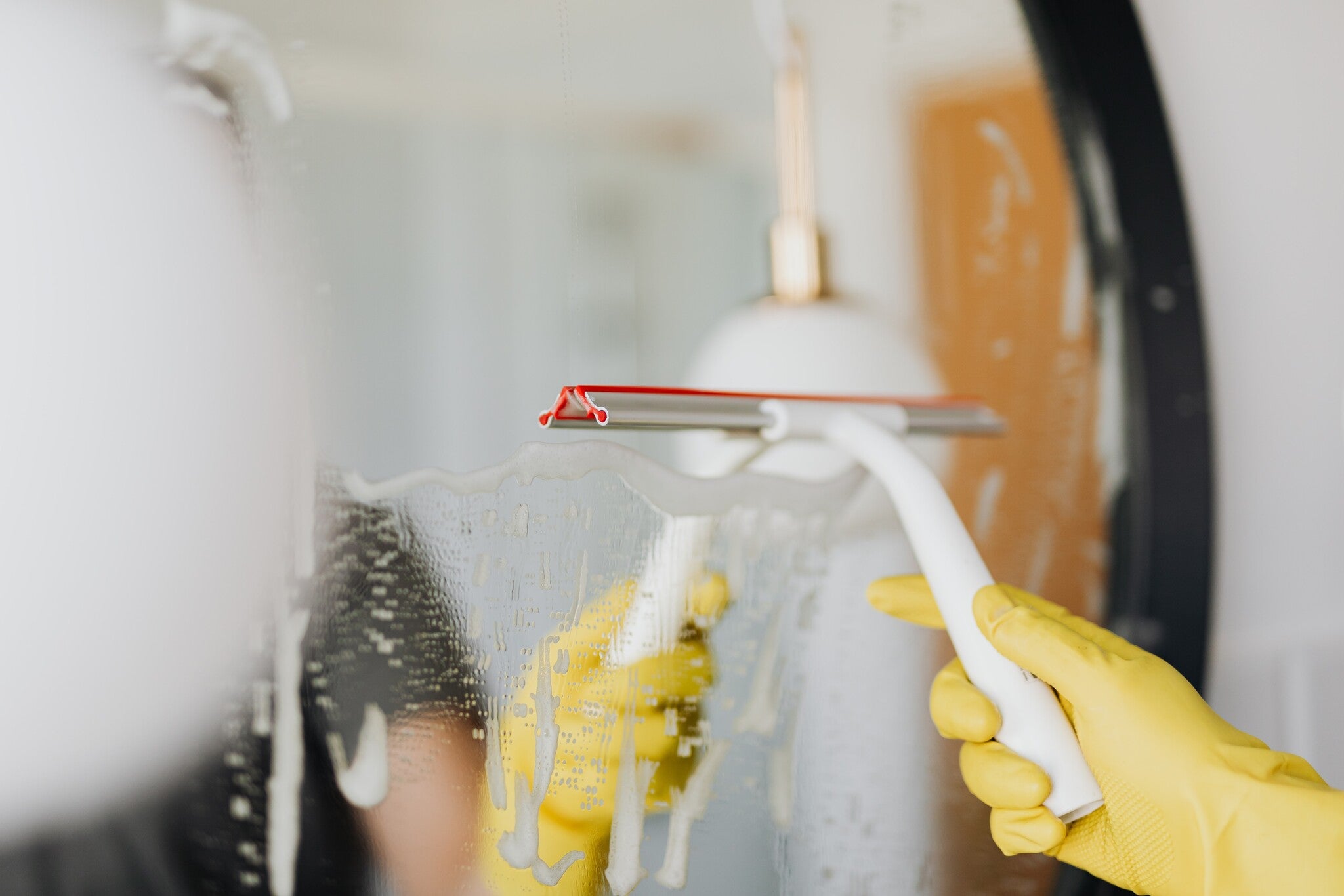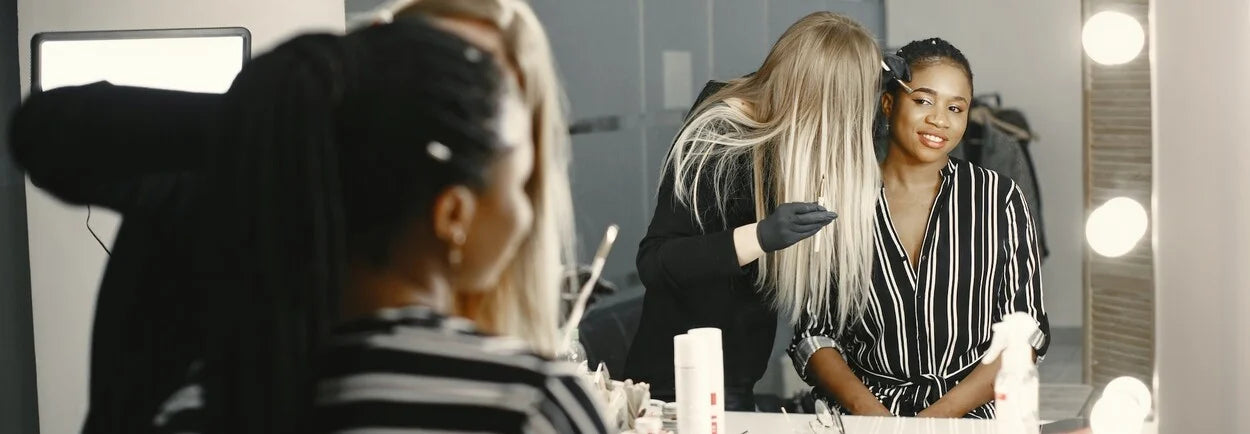
Natural or artificial light for your makeup table?
Applying makeup requires good lighting. Whether you're a professional makeup artist or just looking to enhance your daily routine, the right light can make a world of difference. But what's better: natural or artificial light for your makeup table? In this article, we'll discuss the pros and cons of both types of light and provide some tips to optimize your makeup table lighting.
The importance of good lighting for makeup application
Before delving into the differences between natural and artificial light, it's essential to understand the importance of good lighting for applying makeup. The right light not only enables precise application but also enhances the color and texture of your skin.
Good lighting is crucial for makeup application, as it can make the difference between a flawless look and a makeup mishap. The appropriate light allows you to see the true colors of your makeup and notice any imperfections. A makeup mirror with proper lighting elevates your beauty routine to the next level.
What is natural light, and why is it important?
Natural light originates from the sun and is considered the purest form of light. It has a broad spectrum of colors, ranging from cool blue in the morning to warm yellow-orange in the late afternoon. Natural light also accurately reflects the true colors of objects, making it ideal for makeup application.
Natural light is a gift from Mother Nature. It not only provides warmth and energy but also enhances beauty. Sunlight streaming through windows can make your skin glow and make your makeup appear more natural. Leveraging natural light when applying makeup allows you to see colors accurately and choose shades that complement your skin tone.
The benefits of natural light for your makeup
Natural light offers several advantages for makeup application. Firstly, it provides precise color representation, allowing you to see the true hues of your makeup before applying it. This helps prevent unwelcome surprises, such as wearing a foundation that doesn't match your skin tone. Additionally, natural light highlights any imperfections in your makeup, such as streaks or smudges that might go unnoticed under artificial light.
Natural light acts as a magic wand for your makeup, helping you find the perfect foundation that seamlessly blends with your skin tone. It also accentuates subtle details in your makeup, such as the shimmer of a highlighter or the shade of a lipstick. With natural light, you can bring out the true beauty of your makeup and ensure you look your best.
Artificial light and makeup
Artificial light is man-made and can come from various sources, such as incandescent bulbs, LED lighting, and fluorescent tubes. Unlike natural light, artificial light typically has a limited spectrum of colors.
Artificial light plays a significant role in the world of makeup. Natural sunlight isn't always available when applying makeup. Therefore, choosing the right artificial light with the correct color temperature is essential. It ensures makeup artists can see accurate colors and work precisely. Whether in a professional makeup studio or a personal makeup table, selecting the right artificial light is crucial for flawless makeup application.
Different types of artificial light
There are several types of artificial light to choose from, each with its characteristics. Incandescent bulbs emit warm yellow light and are a popular choice for makeup tables. They create a cozy atmosphere and ensure you look your best even in the darkness outside.
LED lighting provides bright white light and has a long lifespan. It is energy-efficient and can be easily adjusted to the desired brightness. LED lighting is ideal for makeup artists who need a bright and well-lit environment to work accurately.
Fluorescent tubes are bright but can have a bluish tint, which can lead to distorted color representation. They are often found in professional makeup studios due to their bright and consistent lighting, but can distort colors.
How to choose the right artificial light for your makeup table
Choosing the right artificial light for your makeup table can be challenging. There are various factors to consider, ensuring you get the best lighting for your makeup routine.
- First and foremost, look for lighting that provides a natural color representation similar to natural light. This helps you see the colors of your makeup accurately and prevents you from looking different once you step outside. It can be frustrating to apply your makeup perfectly only to look different once you're in natural light.
- Additionally, consider the brightness of the light. You want sufficient lighting to see all the details of your makeup, especially when applying eyeliner, mascara, and other delicate products. Insufficient light can lead to messy application and inaccurate results.
- Another consideration is the flexibility of artificial light. Some lighting systems can be dimmed or adjusted to different color temperatures, allowing you to customize the lighting according to your needs and preferences. This can be handy if you want to adjust your makeup to different lighting conditions, such as daylight or evening light.
Ultimately, choosing the right artificial light for your makeup table is a personal choice. It's important to explore different options and experiment with various types of lighting to discover what works best for you. With the right lighting, you can ensure your makeup always looks perfect, regardless of the lighting conditions.
Comparison between natural and artificial light
To facilitate the choice between natural and artificial light, it's useful to consider specific aspects, such as the influence of light on the color of your makeup and which type of light is best for your skin type.
The influence of light on the color of your makeup
The color of your makeup can vary depending on the type of light you're in. Natural light provides an accurate representation of colors, while artificial light can alter color intensity. This means your makeup might look different when you go outside or take photos under different lighting conditions. Therefore, it's crucial to consider both natural and artificial light when choosing your makeup colors.
Additionally, the type of light can also affect how your makeup appears in photos. Natural light can make your makeup look fresh and natural, while artificial light can distort colors and make you appear pale or overly made up. Hence, it's essential to consider the lighting conditions in which you'll be wearing your makeup, especially if you plan to take photos.
Which type of light is best for your skin type?
Every skin type has its lighting needs. Natural light can help highlight any imperfections in your skin, while artificial light might conceal them. If you have problematic skin, using natural light can help you apply makeup more accurately and make corrections where necessary.
Moreover, the type of light can also impact how your skin appears. Natural light can give your skin a healthy glow and emphasize any irregularities, while artificial light can make your skin look smoother and more even. It's essential to experiment with different lighting conditions to determine which type of light is most flattering for your skin type.
Additionally, using artificial light with specific properties, such as daylight lamps, can help accentuate the natural beauty of your skin. These lamps mimic the sun's natural light and can make your skin look healthy and radiant, even when you're indoors.
Tips for optimizing your makeup table lighting
Regardless of your choice between natural or artificial light, there are some useful tips for optimizing your makeup table lighting.
Positioning your makeup table for the best light
Place your makeup table near a window to allow natural light to enter. If this isn't possible, consider adding lighting to your makeup table that provides bright and even illumination. Ensure the light shines directly on your face without creating shadows.
Using mirrors to maximize light
Mirrors can play a significant role in optimizing your makeup table lighting. Place a large mirror behind your makeup table to reflect the natural light from the window. This will help distribute light evenly and reduce shadows.
Choosing the right lamps for your makeup table
If you're using artificial light, opt for lamps with a high Color Rendering Index (CRI) value. This index indicates how accurately a light source can reproduce the true colors of objects. The higher the CRI value, the more accurate the color representation. Additionally, you can choose dimmable lamps, allowing you to adjust the light intensity according to your needs.
In conclusion, both natural and artificial light are suitable for makeup application, but it depends on your personal preference and circumstances. Choose wisely and experiment to discover which lighting works best for your makeup routine. With the right lighting, you'll shine like never before!








